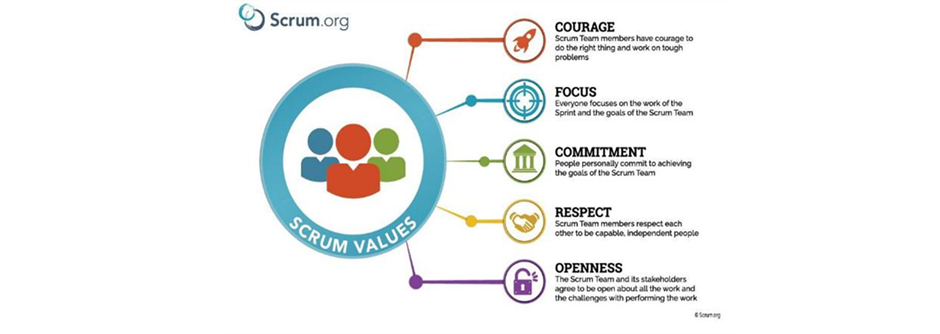By Priya Patra
May 10, 2023
It’s a new world, with new difficulties and solutions. Our Projects’ nature has altered, as have our teams. We have overcome the geographical divide to Anyone, Anytime, Anywhere – the Work of the Future.
According to the PMI report “A Case for Diversity,” the ability to draw from a diverse range of backgrounds and experiences promotes innovation, unleashing views that might otherwise go unconsidered.
Here are some statistics and reports that emphasize the importance of workplace diversity management. According to research (Adler., 1991) at UCLA’s Graduate School of Management, the efficiency of diverse teams is dependent on team leaders or managers managing diversity, knowing the values, ethics, and perceptions in a multicultural scenario, and being inclusive.
According to a Harvard Business Review report (Titus, March 2019), teams with inclusive leaders are:
- 17% more likely to report that they are high performing,
- 20% more likely to say they make high-quality decisions, and
- 29% more likely to report behaving collaboratively.
The numbers provide evidence that the inclusivity of diverse groups in a team cannot be ignored. Nowadays, all organizations prioritize diversity and inclusion. Leaders in the D&I movement recognize that D&I is about more than just building a diverse pool of candidates. It is more about having an inclusive workplace that not only attracts varied people but also understands how to provide opportunities for success.
So how do we become a more inclusive leader? How can we ensure we recognize our biases? How can we ensure that we track our progress toward becoming an inclusive leader?
Striving for inclusivity? Agile can help!
Diversity as we know it today is not only about gender there are four layers of diversity. According to Lee Gardenswartz and there are various dimensions of diversity, dividing them into 4 layers:

Adapted from Goldminz, Itamar. “The 4 Layers of Diversity [Gardenswartz & Rowe].” Medium, Org Hacking, 17 Dec. 2019,
https://medium.com/org-hacking/the-4-layers-of-diversity-gardenswartz-rowe-47013e42070f.
Personality (1st layer) shows how a person interacts with others. introvert, ambivert, or extrovert, it is influenced by the individual’s values and beliefs.
Internal dimensions (2nd layer) over which a person has no control over her age, sexual orientation, race, ethnicity as well as or physical ability
External dimensions (3rd layer) External dimensions are aspects of diversity in an individual’s life in which they have some control like geographical location, Income, educational background, etc
Organizational dimensions (4th layer) include elements that are integrated into work and social interaction in an organization/at a workplace
So are we doing enough in these layers of diversity?
So how can Agile help us here?
Agile-SCRUM values like courage, focus, respect, openness, and commitment to create an inclusive workplace. Let’s take a closer look at how these ideals might improve inclusion.

Adapted from “Updates to the Scrum Guide: The 5 Scrum Values Take Center Stage.” Scrum.org,
https://www.scrum.org/resources/blog/5-scrum-values-take-center-stage
Courage to engage in uncomfortable talks and to stand up to outside forces that seek to change or disrupt the team’s priorities. It also refers to the courage required to be in spaces of equity
and inclusion, where varied views and viewpoints are reflected and heard.
Rather than our own biases, focus on the team’s goals, project goals, people, and talents.
To encourage diversity of opinion, Respect differences. Respecting and appreciating each team member’s skills, expertise, talent, experiences, and opinions.
Commitment to team goals, as well as living the SCRUM values also implies that agile teams are dedicated to one another and to working as an effective workgroup, and this includes teams from various backgrounds.
Openness to new and diverse ideas, the ability to give and receive constructive feedback, and the ability to learn and change.
Why are values important? Values drive conduct, and our behavior, of course, reflects our values. In people’s interactions and collaborative work, values take precedence.
So we know the values now, but can this help us recognize and minimize our biases?
Over the years, I have been working on my biases in the demographic, generational, and remote sectors using a tool – My Value Wall!
What exactly is a value wall?
They say that if you can make it visible, you can recognize it and try to solve it!
The SCRUM values are displayed on a virtual wall 0 a constant reminder to me and my team to live by the SCRUM Values in everything that e do – courage, focus, respect, openness, and commitment
Each team member is asked to write down how they are showing value in their daily work.
A value moment – is when we lived by the SCRUM values.
A whoops moment – is when we failed to live by the SCRUM values.
Recognizing these times was a crucial step in understanding my prejudices.
When we look back as a team, we look for ways to maximize the value moments and minimize the whoops moments to be a more inclusive team.
Here is a snapshot of our value wall:

As we continue to build our hybrid teams we will need to ensure measuring and managing inclusion. While it is extremely difficult to get rid of our biases, this value wall can help us to recognize them, once recognized we can take a step towards reducing them
So how are you recognizing your biases, how are you ensuring progress in building an inclusive workplace? Do you have any suggestions, we would love to know more.
About the Author
Priya is a mother of two, author, blogger, women empowerer, believer, dreamer, creator, and a futurist. An Agile Evangelist and a Program Manager spearheading the quality engineering – India team for energy-utilities and chemicals sector. She leads Agile Community of Practice within the organization of 700+ members, across 40 countries evangelizing Agile practices across all levels in the organization.
She is a speaker for national and international conferences on digital, Agile, and project management. Priya lives in Mumbai with her husband and two kids. In her spare time, she loves volunteering. She leads the outreach portfolio for the PMI Mumbai chapter as Vice President – Outreach. Since January 2020, she has been building a women’s community Women PowerUP Network – a virtual community of around 800 women across the globe. #BeingGoodEnoughIsAmazing #WePowerUP
Priya is a presenter in this year’s Agile and Scrum Online Conference! Check out her presentation details here.
Disclaimer: The ideas, views, and opinions expressed in this article are those of the author and do not necessarily reflect the views of International Institute for Learning or any entities they represent.




